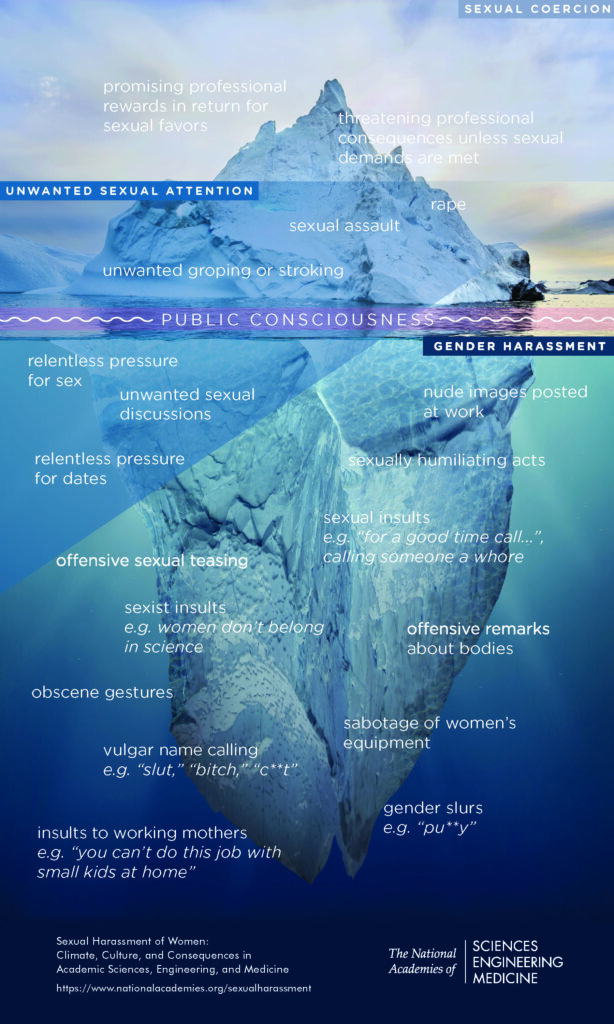Policy Definition
As defined in Penn’s Policy, the term “sexual harassment” refers to any unwanted conduct that is based on an individual’s sex, sexual orientation, gender identity, or gender expression and that:
- Conditions an educational or employment benefit on participation in unwelcome sexual conduct, or
- A reasonable person would determine is so severe, pervasive, and/or objectively offensive that it effectively denies a person equal access to an educational or employment program or activity.
For more information, or to understand if a behavior violates the sexual misconduct policy, please review the Sexual Misconduct Policy or review the Associate Vice President for Equity and Title IX Officer website.
If you are interested in speaking with a confidential staff member about your experience, please contact Penn Violence Prevention.
Types of Sexual Harassment
- Sexual Coercion
- Favorable treatment conditioned on sexual activity
- For example, a professor suggesting that a student might receive a higher grade in a class or a better letter of recommendation if they sleep together.
- Unwanted Sexual Attention
- Unwanted verbal or physical sexual advances
- For example, repeatedly asking out another student in the lab who has said that they’re not interested.
- Gender Harassment
- Sexist hostility and crude behavior
- For example, a group of students publicly rating the attractiveness of women on Locust Walk.
Recommendations from National Academies of Sciences, Engineering, and Medicine
From Sexual Harassment of Women: Climate, Culture, and Consequences in Academic Sciences, Engineering, and Medicine Washington (DC): National Academies Press (US); 2018 Jun 12.
- Address the most common form of sexual harassment: gender harassment.
- Move beyond legal compliance to address culture and climate.
- Create diverse, inclusive, and respectful environments.
- Improve transparency and accountability.
- Diffuse the hierarchical and dependent relationship between trainees and faculty.
- Provide support for the target of harassment.
- Strive for strong and diverse leadership.

Resources
Visit the resources page to find information about who to contact for support and reporting options.
